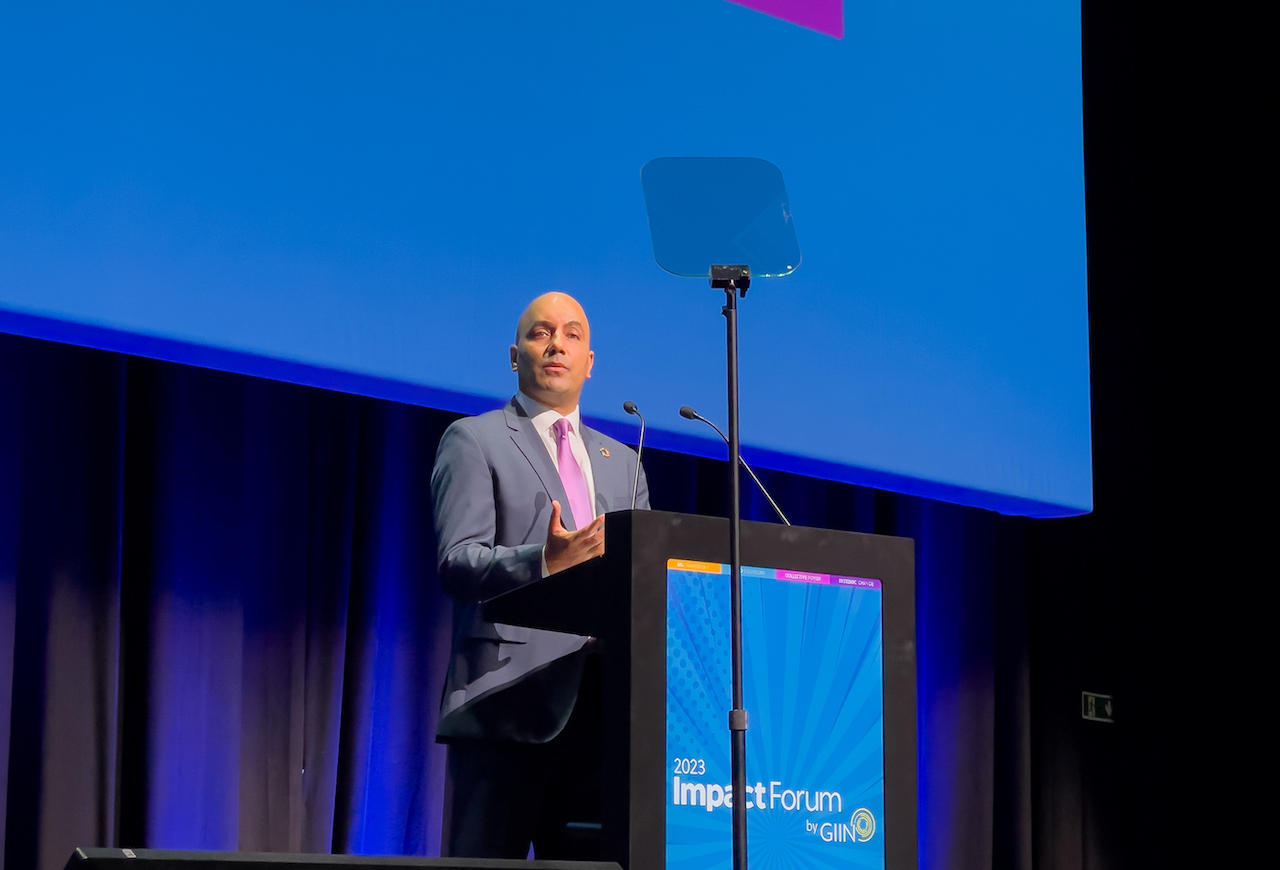The impact investing market is growing fast indicating mainstream acceptance of the sector. Still, the pace of capital allocation towards the SDGs is far from sufficient to tackle the worst effects of climate change and global inequality, according to the GIIN.

The size of the global impact investing market stands at $1.571trn (€1.45trn) of assets under management (AUM) managed by 3,907 organisations, according to the latest market sizing report from the Global Impact Investing Network (GIIN).
The organisation said the survey underlined the rapid growth of impact assets, especially among well established players. Organisations participating in the GIIN’s market sizing exercises in both 2019 and 2024 showed a 21% compound annual growth rate (CAGR) in impact investing AUM over that period.
The GIIN said assessing CAGR over five years was a better guide to the market than comparing figures year to year. In its previous market sizing survey in 2022, the network estimated the impact investing market at $1.164trn AUM. In 2020, the figure was $715bn.
According to the 2024 survey, the average investment portfolio held $986m in impact AUM, while the median investment portfolio held $42m across a subset of 1,593 organisations.
Growing momentum
The ‘Sizing the Impact Investing Market 2024’ survey was published on 23 October to coincide with the GIIN’s annual Impact Forum, held in Amsterdam.
“The findings of this market sizing research underscore the accelerating momentum behind the impact investing industry. In 2024, impact investing is well-positioned to capitalise on this momentum as the urgency for action on social and environmental problems is mounting,” the GIIN said in the report.
Amit Bouri, the GIIN’s CEO, said he was inspired to see how far the impact investing industry has come in the past fifteen years.

“The scale of our ambitions is defined by the scale of the world’s problems. We’ll know that our work is done when the world’s problems are solved. Until then, I’m thankful for everyone working to make impact investing the default investment, putting capital – now over $1.5 trillion of it – towards solutions,” he said.
Investment managers accounted for 59% of organisations sampled, while only contributing representing 27% of global impact AUM. By contrast, pension funds comprised 14% of organisations but held 29% of impact AUM, and insurers accounted for only 4% of the sample, but 19% of AUM.
Data on the geographical spread of impact investors underscores the dominance of organisations with headquarters in developed markets. Western, Northern and Southern Europe made up 45% of institutions sampled, while the US and Canada provided 34%. In emerging markets, the leading regions were sub-Saharan Africa (6% of the total), Southeast Asia (3%) and the Middle East and North Africa (2%).
Government role
The GIIN noted that governments in some key markets in sub-Saharan Africa were playing a catalytic role in mobilising impact investment, with regulatory bodies in Kenya, Nigeria and South Africa aligning guidance for pension fund allocations to national development priorities such as affordable housing, vital infrastructure, economic growth and job creation.
“In so doing, and with partners like USAID providing catalytic mechanisms and technical assistance, local pension funds have seized the opportunity to diversify their strategies toward high impact local development that is aligned to government plans and which governments cannot alone do,” the GIIN said.
In Europe, the EU-level Sustainable Finance Disclosure Regulation (SFDR), which requires organisations active in the financial markets to disclose how they are addressing sustainability, appears to be positively driving behaviour change. In the report, the GIIN cites research covering over 4,000 Article 8 and 9 funds that indicates they have decarbonised their investment portfolio more on average than a control set of funds who signed the UN Principles for Responsible Investment.
However, despite the positive examples, government policy and local market conditions are cited as drags on impact investing by many in the market. The GIIN referred to data in its recent 2024 State of the Market survey showing 65% of investors cited political developments in their local markets as an issue, while 83% of investors noted confusing or conflicting guidance from government regulatory bodies as a challenge that had developed over the past five years. Rising interest rates, inflation pressures, climate change impacts and the continuing impact of the Covid pandemic are other investor concerns.
Institutional investors
The GIIN emphasised the crucial role institutional asset owners need to play if the shortfall in financing needed to achieve the UN Sustainable Development Goals (SDGs) is to be narrowed. UN data showed that this gap, which was estimated at an annual $2.5trn prior to the COVID pandemic, had since grown to around $4.2trn a year, the GIIN noted.
“The current pace of capital allocation towards the SDGs is far from sufficient to mitigate the worst effects of climate change and global inequality, but we can reverse this trend by engaging more investors, more capital and working together in new ways,” the GIIN authors said in the report.
Even mobilising a small portion of the $80trn of institutional assets for impact could help narrow this divide, the GINN said, adding that there was evidence that asset owners such as pension funds, insurance companies and sovereign wealth funds were now adapting their portfolios to include impact-driven investments as strategic priorities.
Bouri said in the market sizing report that the organisation’s research showed impact investors reporting not just good impact performance, but good financial returns, while still meeting their fiduciary obligations.
In its ‘State of the Market 2024’ report, around 90% of respondents reported satisfaction with their financial performance and a similar share reported satisfaction with their impact performance.“This is the kind of data we need to amplify to increase traction with mainstream finance and drive more capital to the market,” he said.






